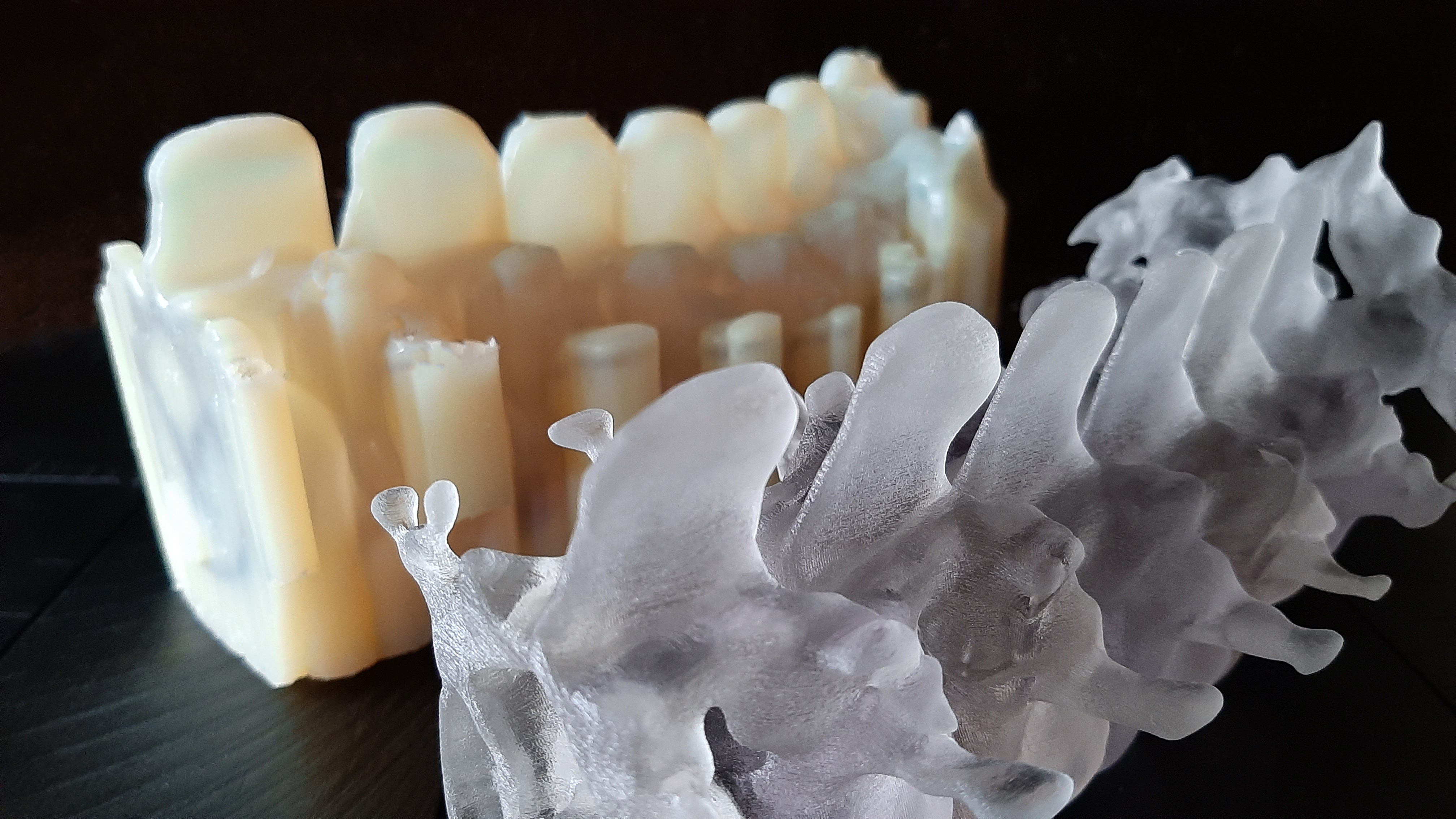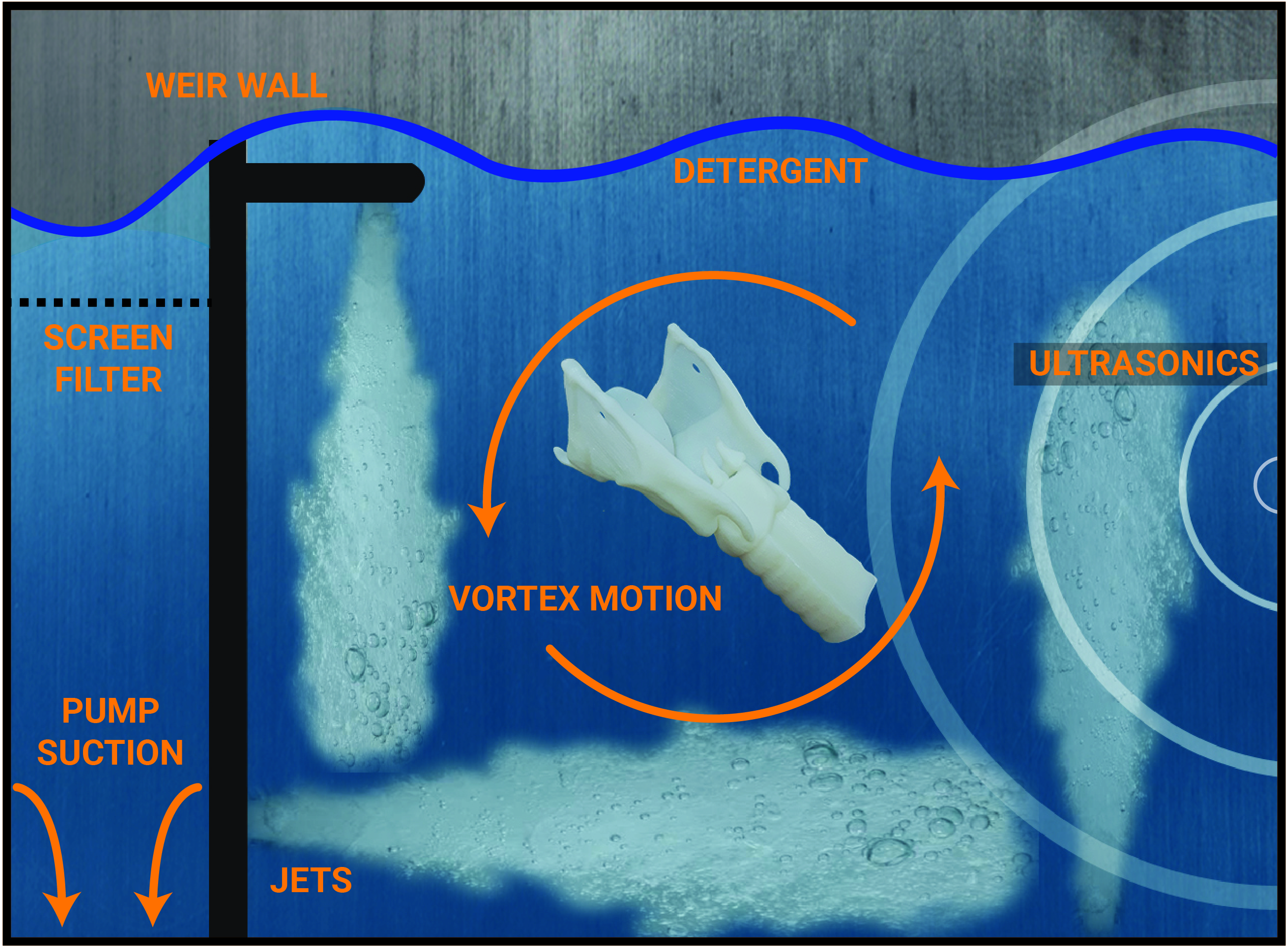PostProcess Technologies, a manufacturer of post-printing systems for 3D printed parts, has been granted a U.S. patent for its Submersed Vortex Cavitation (SVC) technology.
Issued on August 11, but originally filed in June of 2016, the patent is now one of more than 50 that PostProcess holds, including ones for hardware, software, and proprietary chemicals.
Daniel J. Hutchinson, inventor of SVC and Founder & CTO of PostProcess Technologies, states: “The issuance of this patent is confirmation of the ground-breaking work we’ve undertaken over many years here at PostProcess. We’re dedicated to innovating cutting-edge solutions that will transform our customers’ workflows and enable additive manufacturing for Industry 4.0.”

Submersed Vortex Cavitation
SVC is one of the company’s four post-processing technologies, and focuses on support and resin removal. It works by completely immersing a 3D printed part in one of PostProcess’ proprietary detergents while rotating it in a mechanical drum with vortexes. At the same time, the system uses ultrasonic waves to create high-frequency pressure around the part, causing the weak support connections to break off while leaving the part intact.
SVC is featured in the company’s CENTI, FORTI, and DEMI support and resin removal machines. The technology is compatible with almost any additively manufactured polymer part, with special detergents specifically for FDM, PolyJet, and SLA printed components. PostProcess has filed a number of corresponding patents in various countries worldwide, and is currently awaiting mass approval.

Automated post-processing in 3D printing
The firm’s other support removal technology, Volumetric Velocity Dispersion, involves spraying a 3D printed part with a series of high velocity jet streams. The fluids flow bidirectionally to make contact with all areas of the part, and are pumped at a rate of 150 GPM.
PostProcess has also developed two surface finishing technologies specifically for 3D printing: Suspended Rotational Force and Thermal Atomized Fusillade. SRF utilizes an abrasive composite with rotational movement while TAF blasts a part with two perpendicular detergent jets to smooth its surface for aesthetics and functionality.
Just last month, UK-based post-processing specialist AMT announced that its chemical vapor smoothing technology was now patent-protected in the UK. The patent covers all of the machines in the company’s PostPro3D series, a set designed to surface finish 3D printed parts made from thermoplastics such as polyamide, polyurethane, and polypropylene.
Elsewhere, engineering firm Renishaw and 3D printing robotics specialist Additive Automations have partnered up to advance automated post-processing using deep learning. The duo will develop algorithms to train robotic arms to automatically detect and remove support structures from metal 3D printed parts. Renishaw expects the project to reduce average part costs by up to 25%, making additive manufacturing more feasible for high throughput production.
The 4th annual 3D Printing Industry Awards are coming up in November 2020 and we need a trophy. To be in with a chance of winning a brand new Craftbot Flow IDEX XL 3D printer, enter the MyMiniFactory trophy design competition here. We’re happy to accept submissions until the 30th of September 2020.
Subscribe to the 3D Printing Industry newsletter for the latest news in additive manufacturing. You can also stay connected by following us on Twitter and liking us on Facebook.
Looking for a career in additive manufacturing? Visit 3D Printing Jobs for a selection of roles in the industry.
Featured image shows parts finished with SVC technology. Photo via PostProcess Technologies.



